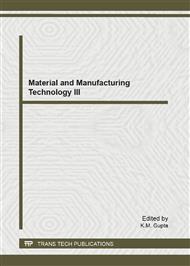p.641
p.647
p.652
p.657
p.662
p.667
p.672
p.677
p.682
Light Truck Braking System Match and Optimization
Abstract:
In order to make the front and rear axle braking force close to the ideal braking force distribution curves, this paper presents a new idea about the design of automotive brake systems. Firstly, the paper has studied the mathematical conversion relationship from the coordinate of utilization adhesion coefficient and braking strength to the coordinate of the front and rear axle braking force. On this basis, the optimal parameters and constraints complying with ECE regulation are determined. And the optimization objective is the degree of deviation between the curve of actual braking force distribution and the curve of the ideal braking force distribution. Taking a light truck for example, genetic algorithm is used to optimize the vehicle front-rear braking force distribution in the platform of MATLAB. Finally, it is proved that the result of global optimization can meet the design goals.
Info:
Periodical:
Pages:
662-666
Citation:
Online since:
July 2012
Authors:
Price:
Сopyright:
© 2012 Trans Tech Publications Ltd. All Rights Reserved
Share:
Citation:


